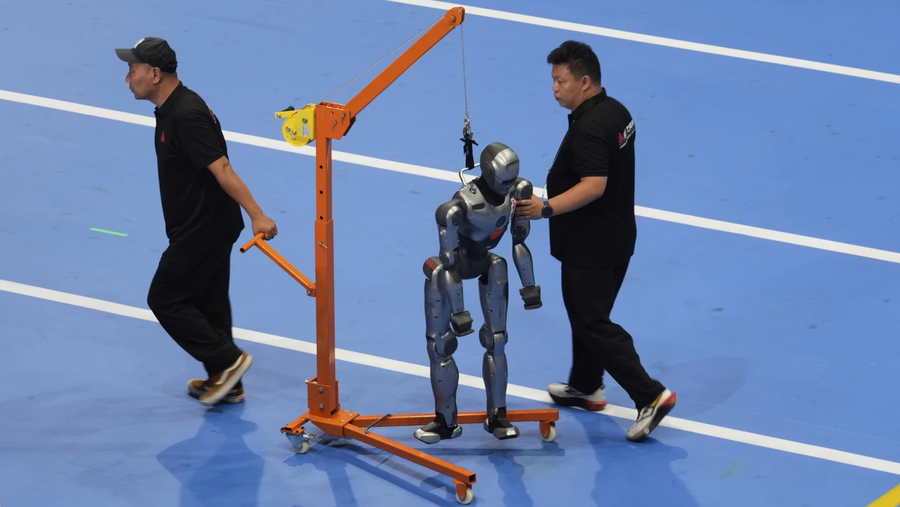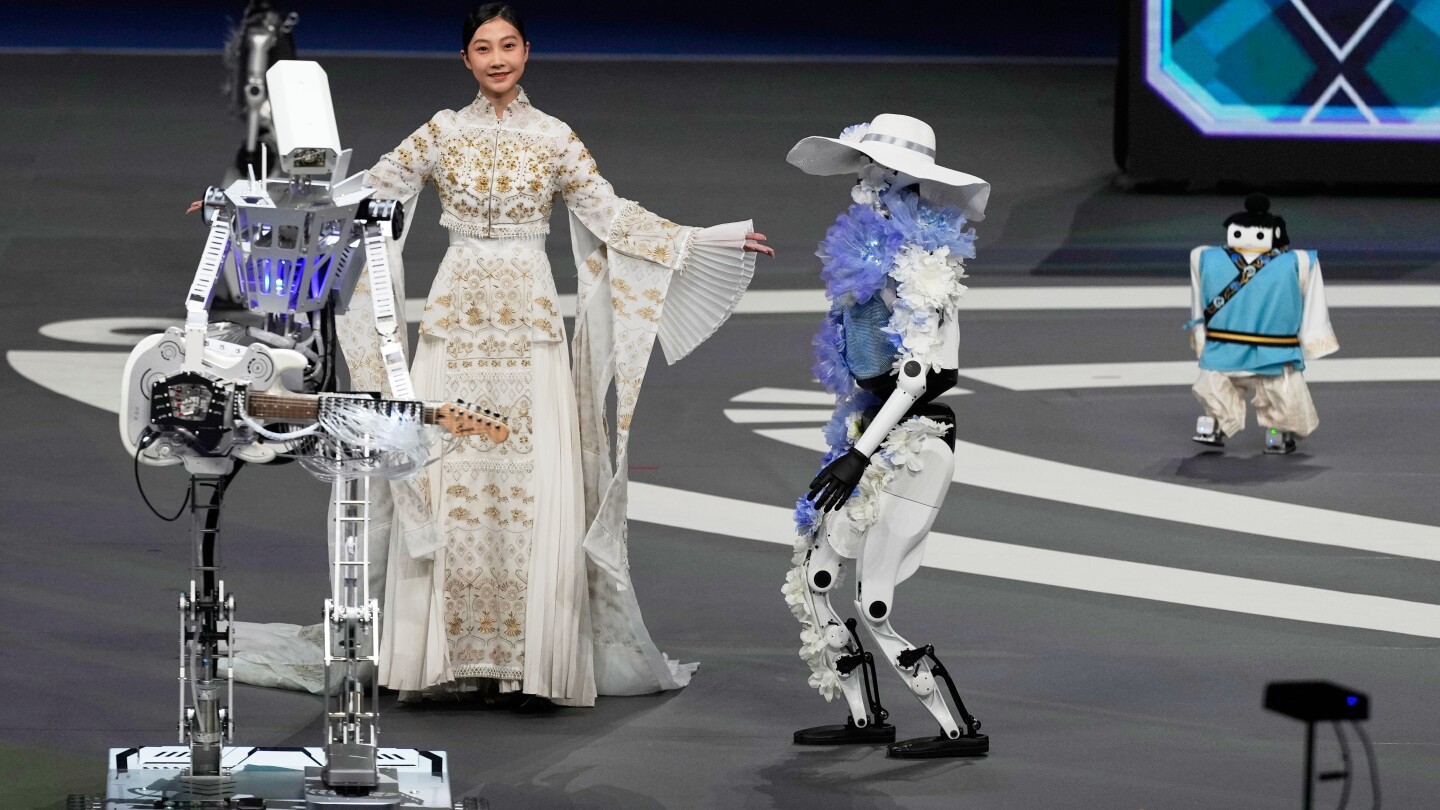The first World Humanoid Robot Games concluded in Beijing on Sunday after four days of competition that brought together 280 teams from universities and private companies from around the world.
More than 500 humanoid robots competed in 487 matches across 26 events including sports, arts, and applied scenarios that highlighted cutting-edge progress in autonomous intelligent decision-making and coordinated movement.
Although this all sounds very serious, the stadium often erupted in laughter when the robots fell down or crashed into each other – and in one case, when a robot manufactured by China’s Unitree Robotics plowed directly into a human staff member during a track event, knocking him down before continuing to sprint off.
Robot crashing into staff member and other event highlights. Video via Cheddar and CGTN
The range of skill and mobility displayed by the humanoid robots varied drastically between the competitors.
While some robots excelled at navigating the obstacle course, others had to be carried off after failing to recover from a nasty fall – usually prompting a cacophony from the audience followed by a supportive round of applause for the team’s efforts.
In the dance competition, some robots landed backflips and performed impressive breakdancing moves with almost human-like fluidity, while others stood stationary slowly waving their boxy arms around with less grace than a six-year-old attempting the classic ‘robot’ dance move.
During the combat and boxing matches, many kicks and punches caught nothing but air – much to the amusement of onlookers – but their colorful outfits and fluid movements made the battles quite something to behold.
Thrills and spills. Video via SCMP
In event highlights, China’s Unitree Robotics clinched gold medals in the 1,500m and 400m races, the 4x100m relay, and the 100m hurdles.
Beijing Innovation Center of Humanoid Robots' Tiangong Ultra robot won the 100m sprint with a time of 21.50 seconds.
In the 5v5 soccer final, Tsinghua University's Hephaestus team defeated Germany's HTWK Robotics+Nao Devils 1-0 to claim the title, while the China Agricultural University Mountain & Sea team was crowned in the 3v3 soccer championship.
According to the rules of the soccer competition, all the participating robots needed to make autonomous decisions on the field, make judgments (such as defense, offense and passing), and compete without human intervention. However, humans were often needed to reorient fallen robots.

Robot 'medics.' Image via KOCO
Despite there being winners and losers in every category, for many participants, the priority was science – not the scoreboard.
Max Polter, a member of the HTWK Robotics+Nao Devils team, stated that the games are as much about collaboration as competition.
"We publish our code after tournaments, so other teams can build on it and share back new insights. That's the spirit of the game — fierce rivalry on the field, but collective progress off it. Here in Beijing, we've felt truly welcomed. From traditions like slow clapping whenever a robot falls to shared dinners that spark ideas, events like this go beyond sport to become platforms for global cooperation."
The competition highlighted the robotics world’s rising focus on embodied intelligence, which refers to the approach of designing robots that learn and adapt through physical interaction with their environment, rather than relying solely on pre-programmed instructions or complex algorithms.
Just a few years ago, it was rare to see a humanoid robot that could reliably walk, let alone run, jump, or handle rough terrain.
Advancements in artificial intelligence have enabled the machines to do a wider range of basic tasks and new algorithms have enhanced the interplay between morphology, action, perception, and learning.

Robots getting ready to perform. Image via AP News
Robots powered by artificial intelligence have already revolutionized manufacturing in China and many of the participating entrepreneurs believe that humanoid robots will soon do many of the physical tasks now handled by people, including household chores, warehouse packaging jobs, and factory labor.
The developers acknowledge that track and field isn't the same as real-world work, so the algorithms created for the competition aren't directly transferable, but sports provide a valuable testbed for hardware and software – if a robot can handle intense exercise and long-distance running, you can trust it to perform reliably in daily life.
At the closing ceremony, the event organizers launched the World Humanoid Robot Sports Federation and confirmed that Beijing will host the second edition of the World Humanoid Robot Games in August next year.
We are looking forward to seeing the improvements made in the coming years – although, we will miss the hilarious mistakes and falls we witnessed at this year’s competition.
[Cover image via NDTV]





















0 User Comments